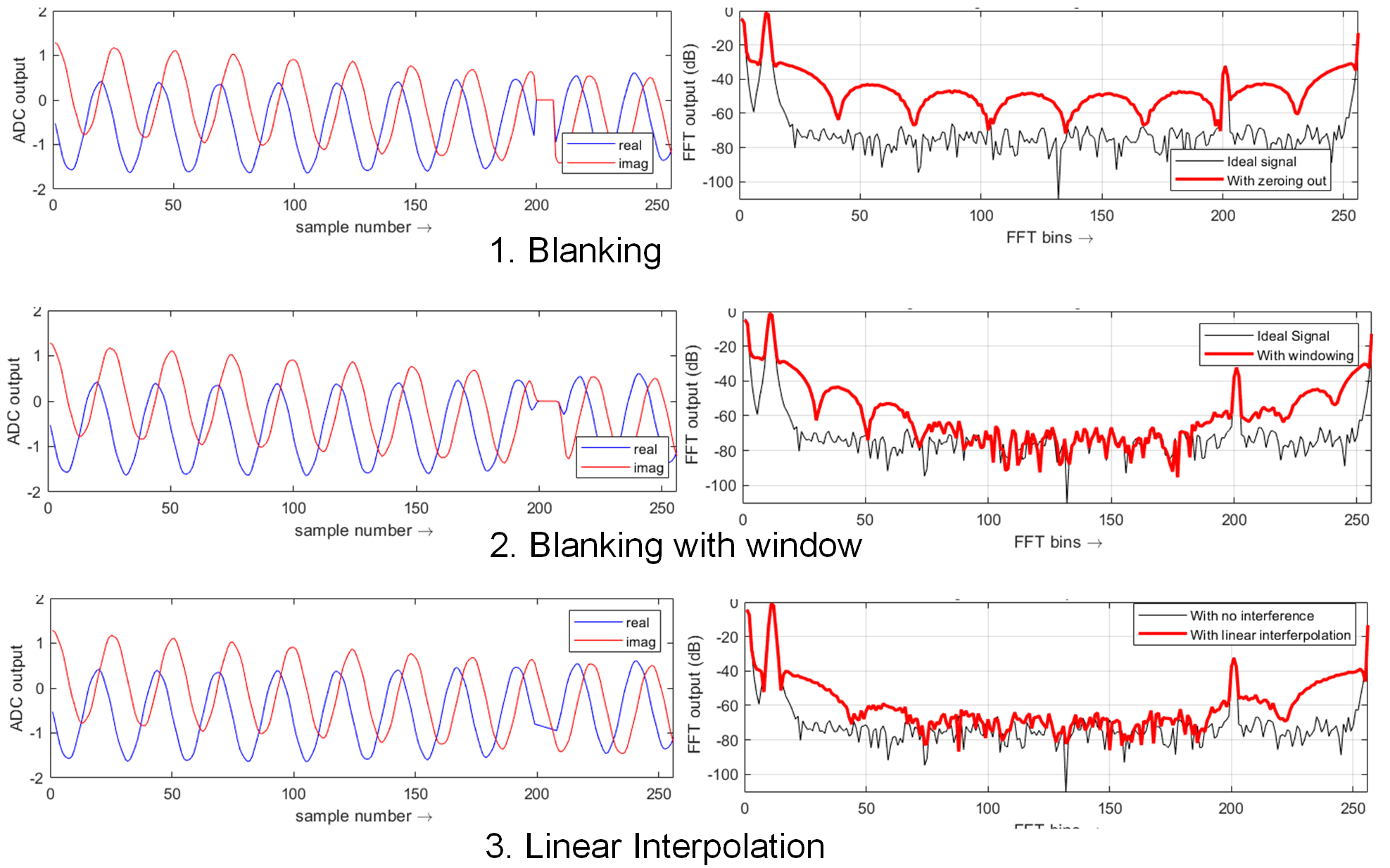SWRA662A January 2020 – September 2022 AWR1243 , AWR1443 , AWR1642 , AWR1843 , AWR1843AOP , AWR2243 , AWR6843 , AWR6843AOP , IWR1443 , IWR1642 , IWR1843 , IWR6443 , IWR6843 , IWR6843AOP
4.2 Mitigation
Having found interferer locations, we now would like to mitigate them. Mitigation here refers to the process by which the region of interference is healed.
The simplest method of mitigation is to replace the region of interference with zeros (Figure 4-3 - top). However, that has the side effect of creating large sidelobes that might bury weak targets. A better approach is to blank out with a window. A smoothing window is used to zero the samples that have been affected by interference. This leads to lower sidelobes and better detectability of weak targets (Figure 4-3 - middle).
A better approach is to perform linear interpolation in the blank region, using the last good ADC sample before interference and the first good ADC sample after the period of interference. Because the strongest reflectors are likely to be closer to the radar and thus have lower frequencies, this approach works well in many cases (Figure 4-3 - bottom).
 Figure 4-3 Different Mitigation Approaches
Figure 4-3 Different Mitigation ApproachesMitigation is an active area of research, and more complex mitigation schemes possible than the three described here. However, as the mitigation scheme becomes more complex, one has to weigh the amount of MIPs consumed against the benefit gained by the more complex scheme.